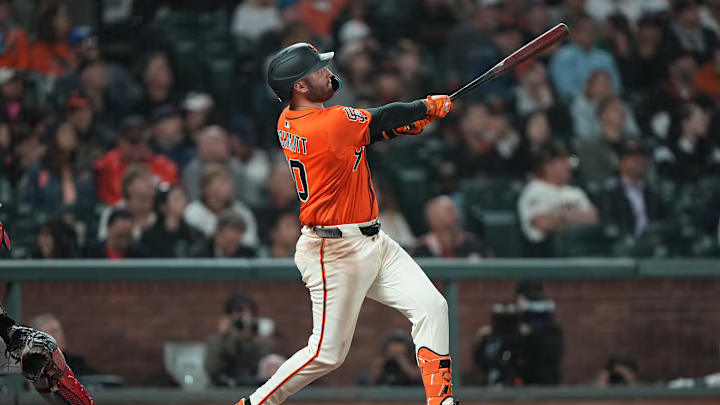Casey Schmitt is hitting .267/.329/.466 (125 wRC+) in 143 plate appearances since assuming everyday at-bats in the lineup on June 10. That is a solid mark, but how sustainable is the young SF Giants hitter's modest breakout season?
How sustainable is young SF Giants hitter's modest breakout season?
Schmitt, along with Christian Koss, is among the players making a case for playing time at second base for 2026. Schmitt continues to see everyday at-bats, suggesting that he is the leading candidate. It certainly helps that he has performed at the plate, too.
When a player starts to put together a string of strong at-bats, I wonder whether it is sustainable or not. Roster construction is difficult, and it requires a thorough evaluation of whether a player is sustainably performing or not.
There are countless examples around baseball where a player goes on an unbelievable run only to hit a wall later on. Baseball is tough and unpredictable like that. Some days, your swing feels great and every hit that comes off the bat is a line drive. Other days, it is tough just to make contact.
Casey Schmitt has an up-and-down rookie season in 2023. He was likely called up too early, and that seemingly hurt his development. Playing time was sporadic last year, but he finished the year on a strong note.
Schmitt began this year on the bench while seeing most of his playing time at first base. However, an injury to Matt Chapman on June 10 opened the door to playing time, and he has not looked back. Overall, the right-handed bat is slashing .243/.315/.403 (106 wRC+) with seven home runs, 24 RBI, and 19 runs in 201 plate appearances.
It is not just the topline numbers, but the process looks sound as well. On Saturday, Schmitt recorded four hitless at-bats against the Washington Nationals in a 4-2 loss. Normally, that would not be a good game, but he put together a string of good at-bats. Three of his four batted balls had an exit velocity of 89.9 MPH or greater with at least a .320 expected batting average. Sometimes, the hits just do not fall.
However, a good process typically yields good results. Schmitt has been hitting the ball hard in the air with regularity. The hits will fall. The expected numbers, such as a .273 batting average and .462 slugging percentage, suggest that he has hit better than his overall numbers indicate.
It is not just the expected numbers, but the process that looks encouraging. Schmitt has a 90.3-MPH average exit velocity, 44.9 percent hard-hit rate, and 40.6 percent launch angle sweet spot rate. Plus, he is pulling the ball in the air in 27.5 percent of batted-ball events.
What does this all mean? It means he is hitting the ball hard and getting the barrel of the bat on the ball. These are traditional concepts that can now be measured.
Plus, Schmitt has made strides at limiting his chase rate. There are a lot of markers in his profile that suggest he can be an above-average hitter with power. The Giants have struggled to get meaningful production at second base in recent years, but Schmitt's bat could help turn that corner, and there are plenty of reasons to believe that he can continue doing it.
More at Around the Foghorn:
